It is common knowledge that Mexican food in America tastes nothing like the food in Mexico. The same is usually true for Italian, Indian, Japanese, and Ethiopian food. (As an aside, did you ever notice that there aren’t a lot of English Restaurants in America? If you’ve ever tasted the food in England, you’ll quickly understand why.)
So when it comes to Chinese food, how do the American restaurants rank? In a word (or several words in this case), the Chinese restaurants in America are authentic. The food there tastes exactly like the food you can get at the expensive restaurants in China.


Well, OK. Let me give you a tour of the food I see most of the Beijingers eat (and I’ve tried each of these personally! Where else do you get such thorough research?)
Let’s take breakfast as an example. Each day the students at my school can choose from the 3 main staples of the Chinese diet: Rice, bread, or “other”. “Other” can loosely be categorized as vegetables, low-quality (by western standards) meat, and tofu. All of these can appear in several forms, for example:
| Rice | Bread | Other |
| Fried Rice | bread rolls / sweet bread rolls | tofu soup (quite good!) |
| Steamed Rice | fried bread (!) | Vegetable and egg soup |
| Rice soup(s) | split English muffins with egg inside | Bread dumplings filled with meat and spinach |
| split English muffins with vegetable and meat inside | Buddha knows what else | |
| Pizza bread with no topping |
By the way, I was very surprised by the amount of bread and milk in the modern Chinese diet – foods that never used to be there. These new foods, along with sodas, are being credited with the increase in “western diseases” (namely hypertension, obesity, and heart disease) in the last 20 years.
Here is a multimedia sampling of the other common foods you’ll find in China:
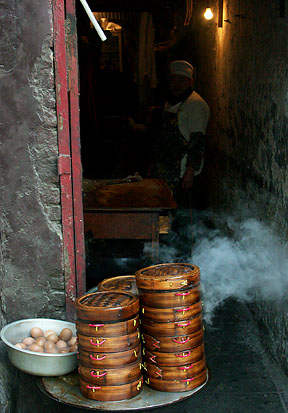
Dumplings (or jiao zi (“jee-yao ts-u”)) are a favorite for breakfast. Many small restaurants set up their steamed dumplings on the sidewalk for passers-by to grab on their way to work.
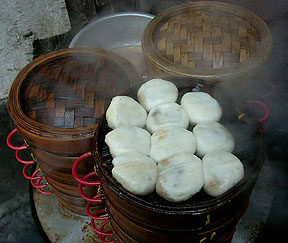
There are many types of fillings and exteriors (usually plain dough or bread); a bread exterior with meat filling is shown here.
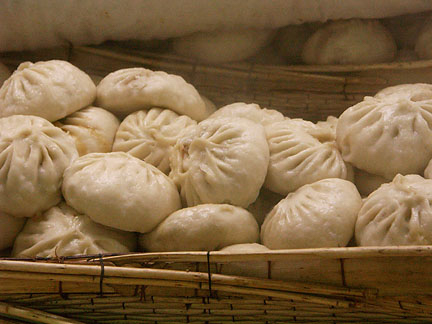
Baozi – steamed bread filled with meat or spinach. (Similar to the jiao zi above, but larger.)
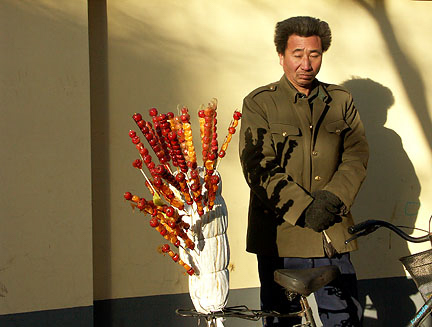
This is a mildly sweet snack called “Tang Hu Lu”. It is a sweet fruit (not unlike a date) which has been coated with a mildly sweet, hardened sauce. Like the ice cream truck after school, many folks sell these to the school children from their bicycles. This is the only food on this page I did not try, for fear of the sticky sweet coating doing something awful to my dental work.
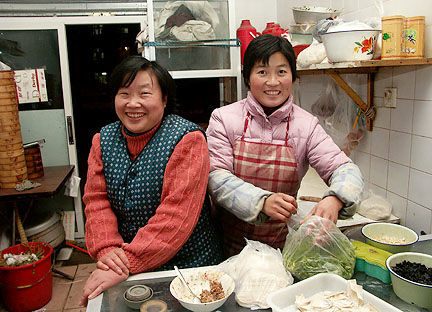
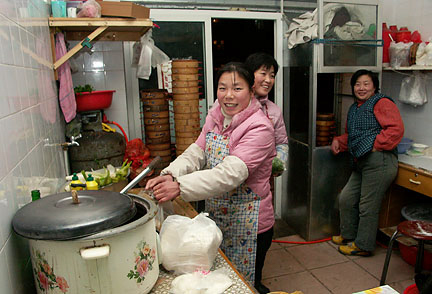
Inside of a local restaurant, where the kitchen and the eating area are the same room.
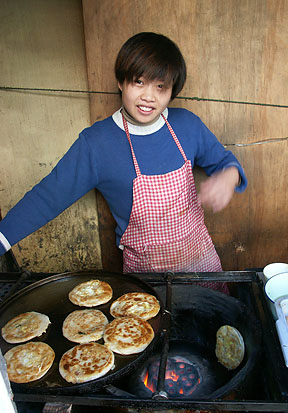
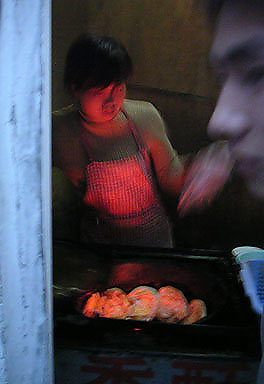
Ji Dan Guan Bing, or Egg Pancakes. Batter with egg, chives, onions, and a spice sauce skillfully cooked in oil and dried out in the oven below. (Picture below is the same person at dusk, being illuminated by the cooking fire.
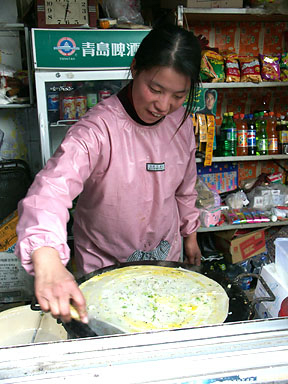
This is a variation on the above. Called “Jian Bing”, you can think of it as an egg tortilla with chives, onions, and crispy stuff on the inside which gives it a nice texture.
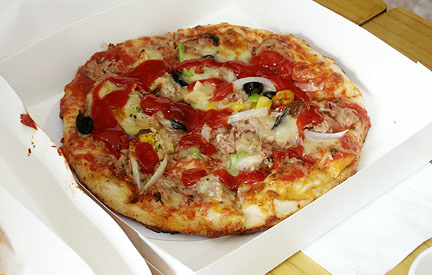
Yes, folks, the local tourist hotel serves pizza with tuna and ketchup.
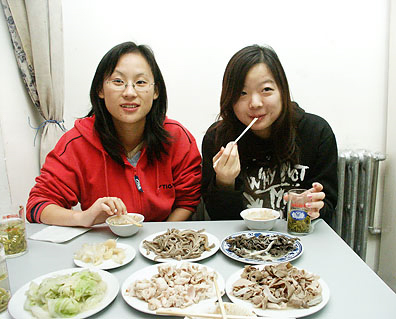
I asked two of my students to take me to a place where no westerner would ever go. They brought me here to Tripe Heaven. (And, for the record, it was pretty tasty!)
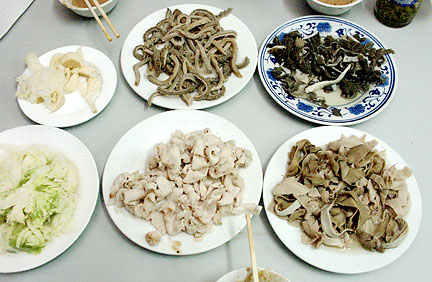
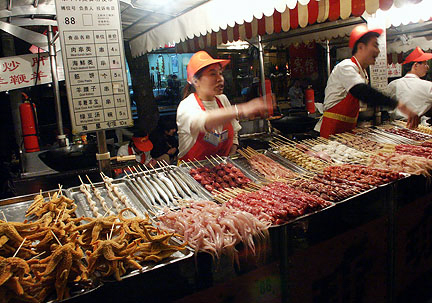
I never knew so many different kinds of animals could be served on a stick!
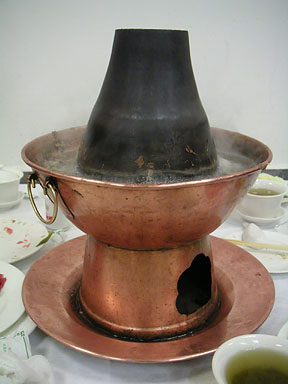
This is “Hot Pot” – very similar to Japanese Teppanyaki. A large pot of boiling water, into which you throw raw meat, chicken, vegetables, tripe, and glass noodles for cooking.
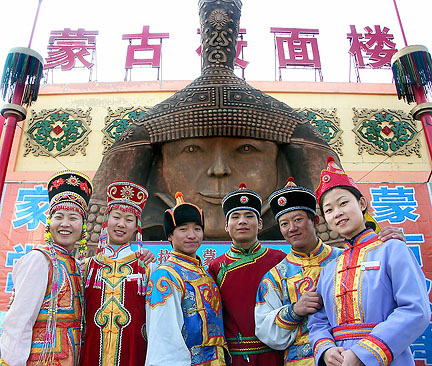
This is a theme Mongolian restaurant, with the face of (what is supposed to be) a smiling Ghengis Kahn on the facade.
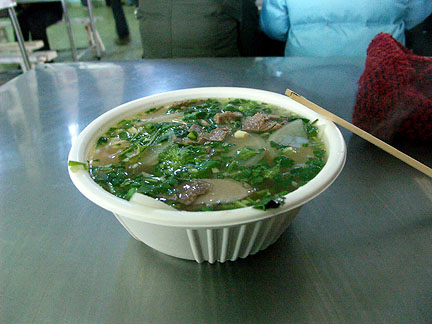
Nui Rou Lo Mian soup. Made fresh while you wait! On top is the final product
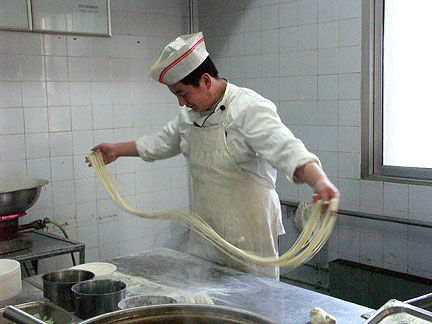
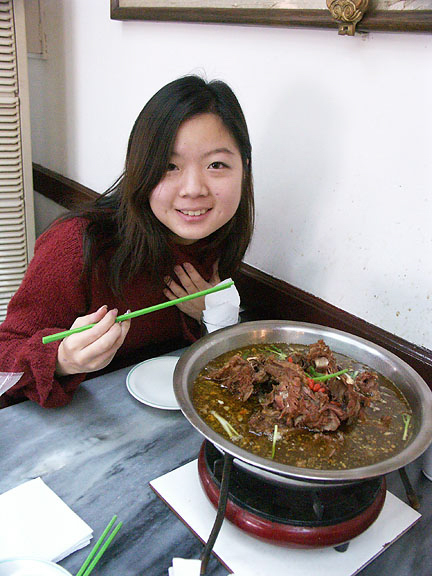
Mutton. (Another word for “Lamb”.) But this isn’t lamb chops; it’s spinal cord with the meat still attached, put into a large stew. This is labeled as a traditional Beijing dish, but I doubt the plastic gloves they give you to eat it with are authentic.
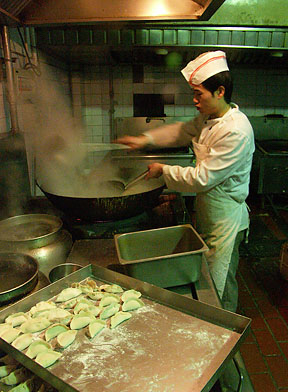
Cooking jiao zi in the back room. The dumplings must stay in the boiling water until they float to the top; then the process is repeated 3 times to make sure they are cooked thoroughly.
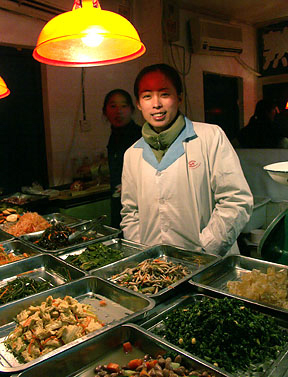
Open-air food for take home!
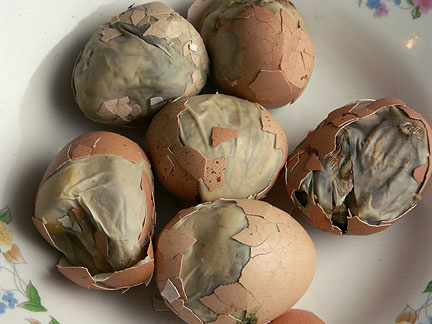
Imagine a fertilized chicken egg in which a baby chick died before it was hatched. Now imagine such eggs being sold on street corners, and the populace happily shelling them, dipping the fetuses (fetii?) in salt, and eating the whole thing.
And, like many restaurants in America, the atmosphere can vary greatly from “fancy” to “the moon” (i.e., no atmosphere).
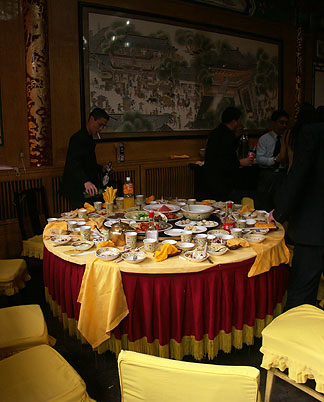
Fancy
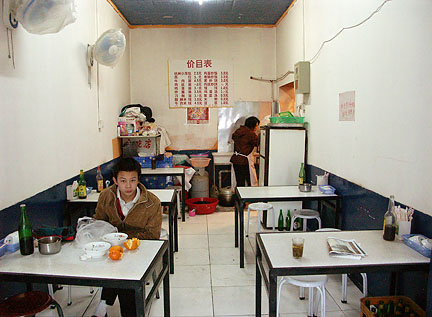
The Moon